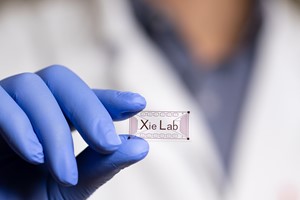The global disinfection equipment market size is estimated at USD 3 billion in 2021 and is anticipated to foster at a (CAGR) of 20% from 2022 to 2030. The rising speculations for the extension of wastewater offices combined with the rising predominance of Hospital-Acquired Infections (HAIs) are relied upon to support the market development over the conjecture time frame. Likewise, expanding the utilization of recycled water in scene water system, vehicle washing, and urinals has prompted the interest for sanitization advancements, which is required to impel the market development over the figure time frame. The U.S. Natural Protection Agency has supported bright (UV) sanitization for little and medium-sized public water frameworks because of the expanding request. Moreover, EPA is additionally considering including the traditional UV treatment innovations, for example, medium-pressure UV, UV oxidation, and beat UV as "arising" advances, which in outcome will make a wide scope of chances for item makers in the U.S. throughout the next few years.
Item fabricating has expanded since the flare-up of the COVID-19 pandemic. The Defense Research and Development Organization (DRDO) has dispatched UV Blaster, which is helpful for cleaning cutting edge surfaces and regions with an enormous progression of individuals, like air terminals, inns, workplaces, metros, shopping centers, and production lines. Simplicity of establishment and low support, management, and space necessities have additionally prompted the developing interest for this innovation. What's more, the gear likewise gives further developed security, least assistance time, and low affectability to pH and temperature varieties contrasted with customary sanitization advances, like chlorination.
UV radiation isn't good for water with undeniable degrees of dissolvable natural matter, suspended solids, or turbidity, as it makes it hard for radiation to infiltrate water. Notwithstanding, rising interest for the UV oxidation measure in water and wastewater treatment plants is expected to support the UV sanitization gear market development over the gauge time frame.
Segment Type Insights:
UV lights drove the market and represented 33% of the worldwide income share in 2020 by virtue of the expanding request in water and wastewater treatment plants. The developing foothold for appropriate sanitizer advances alongside expanding worries for cleanliness and wellbeing, particularly in the medical care and food and drink enterprises, is probably going to drive interest.
The yearly working expenses for this gear is profoundly reliant upon the support and substitution expenses of sleeves, lights, counterbalances, and other staffing prerequisites. The costs for UV sanitization gear have diminished in the course of recent years by virtue of the improvement in light and framework plans, which has expanded contest among producers.
UV lights typically last up to 14,000 working hours and are for the most part changed get-togethers 12,000 hours. Quartz sleeves are relied upon to last as long as 8 years and are by and large supplanted following five years. Moreover, the existence pattern of weights is around 15 years and is typically supplanted at regular intervals, as per the U.S. EPA wastewater innovation truth sheet. Medium-pressure mercury UV lights are expected to develop at the most elevated rate as they are only utilized in wastewater treatment plants and drinking water applications. Low-pressure bulbs are generally utilized in applications where the stream rates are low, and openness times can be longer. Mixture lights are utilized in business type applications as they can effectively treat microbiological tainting.
Application Insights:
The reception of UV sanitization gear in water and wastewater treatment applications drove the market and represented 75% of the worldwide income in 2020. As indicated by the food net report distributed by the Center for Disease Control in 2019, the contaminations from 5 normal foodborne microbes including Cyclospora, Vibrio, STEC, Yersinia, and Campylobacter are on the ascent. Subsequently, the interest for sterilization gear is relied upon to drive interest for UV innovation.
Diseases connected to poultry ventures and verdant green produce is a space of concern. Subsequently, the Center for Disease Control's report additionally focuses on the requirement for expanded boundless sterilization advances, like UV, to decrease the pollution during food handling, readiness, and creation. The item tracks down a wide scope of uses in mark of-passage, places of-utilization, places of fill, post-carbon channel, pre film filtration, pre converse assimilation framework, post water, and pre syrup stockpiling tanks, post opposite assimilation stockpiling tank, preceding cycle and dissemination circles, and where there is a bio-pollution issue, as UV sanitization stops bacterial development that might happen from drainage of surface water or sewage. Since COVID-19 can be passed straightforwardly from one individual to another by respiratory beads, it can likewise be communicated through fomites and contact. Furthermore, the brooding time frame for contaminated people is roughly 1 to 14 days, which is relied upon to drive interest for UV sterilization innovation in institutional segregation communities.
End-use Insights:
The city section drove the UV sterilization gear market and represented more than 48% of the worldwide income in 2020 by virtue of the expanding entrance of the innovation in water and wastewater treatment plants in created nations. Various city wastewater treatment plants have begun embracing UV sterilization treatment arrangements over traditional advancements as it is financially savvy, safe, and eco-accommodating. The UV sanitization measure just adds bright light and, thusly, no affects the water's oxygen levels and require low contact time required. The item request is likewise expected to see a flood in the sanitization of wastewater for reuse across different applications in the civil, business, and modern areas.













